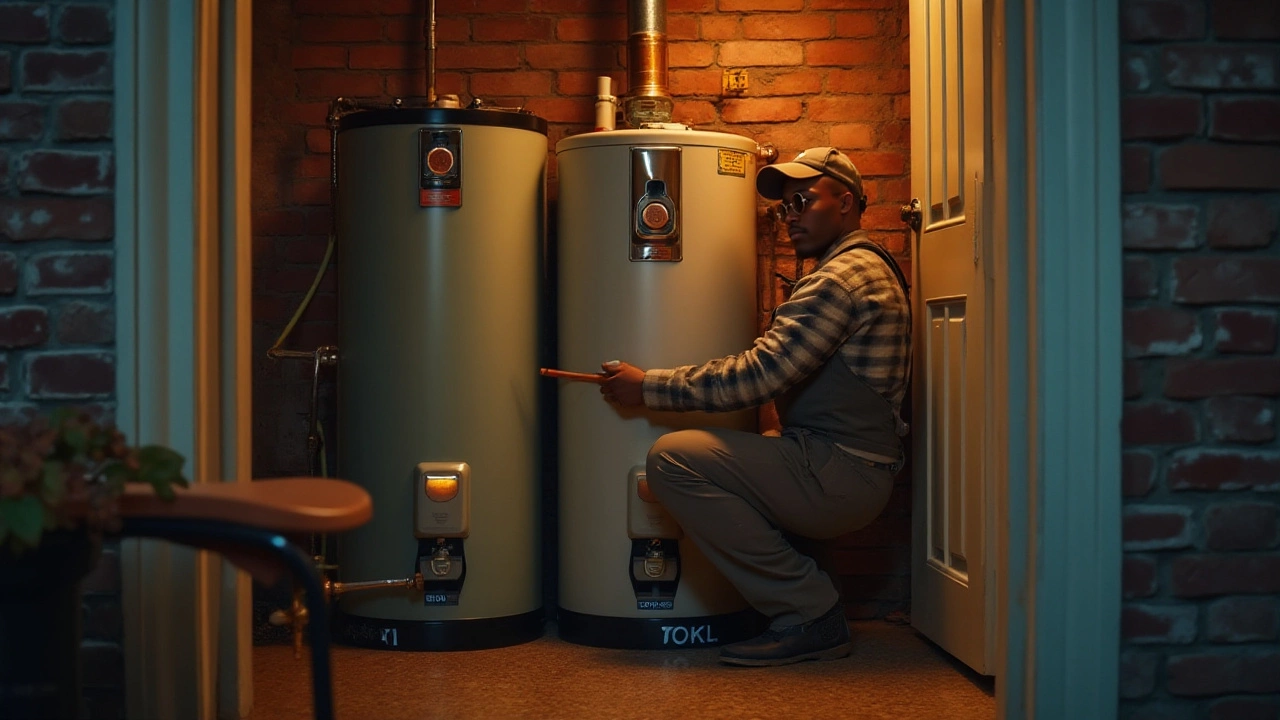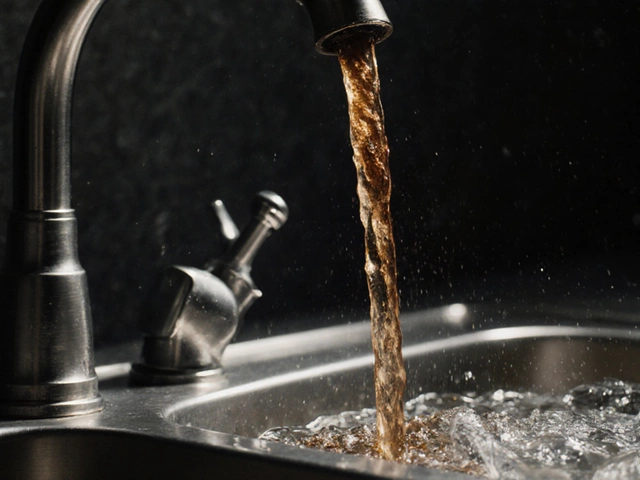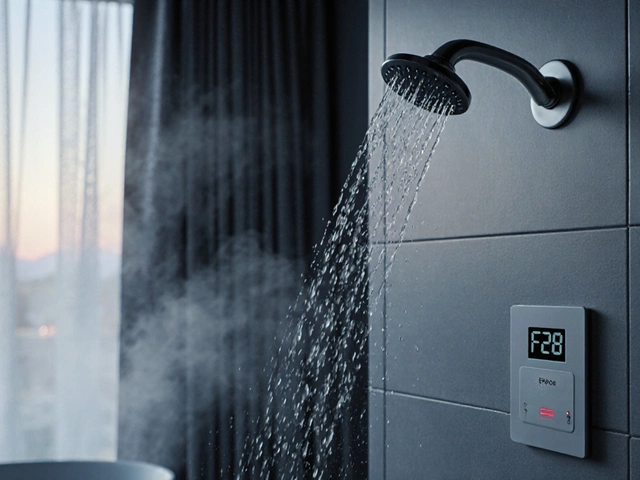Water heaters are often unsung heroes in our homes, working tirelessly to provide us with warm water for showers, dishwashing, and laundry. With such a crucial role, it's important that we keep them well-maintained. One dilemma many face is whether to flush or drain their water heater. Both methods have their unique advantages, but which one truly suits your needs?
This article untangles the web of confusion surrounding water heater maintenance. We'll explore the benefits and drawbacks of flushing versus draining, the process of each, and how proper care can enhance the efficiency of your system. Keep reading to discover which choice aligns best with your maintenance routine and how to extend the life of your water heater.
- Understanding Water Heater Basics
- Why Maintenance Matters
- Flushing Your Water Heater
- Draining Your Water Heater
- Which Method to Choose?
- Long-term Maintenance Tips
Understanding Water Heater Basics
Water heaters are essential appliances in any home, quietly working behind the scenes to provide us with comforting warm water for a myriad of uses. These indispensable units come in several types, yet they share a common goal—supplying hot water efficiently. To understand how to maintain your water heater effectively, let's unravel its basic components and types. Essentially, water heaters are either tank or tankless. Traditional tank water heaters are most common, consisting of an insulated storage tank where water is kept hot and ready for use. Typically powered by electricity, gas, or oil, these tanks can vary greatly in size and power output. As demand is placed on the system, hot water is drawn from the top of the tank, and cold water replaces it at the bottom, ensuring a steady supply.
Tankless water heaters, on the other hand, create hot water on demand. By doing so, they avoid the standby heat losses associated with traditional tanks and are often more energy-efficient. These systems usually utilize powerful heat exchangers activated when hot water is needed. However, despite their efficiency, they require careful sizing based on household demand. As water passes through, it's heated to the desired temperature, ensuring a continuous flow without the limitations of a tank capacity. Hot water is vital for daily comfort, so having a good understanding of these systems ensures we make informed choices about upkeep. Regular water heater maintenance is essential for both types, and knowing whether to flush or drain your water heater is part of this ongoing care.
The importance of regular maintenance cannot be overstated. Mineral buildup is a common issue, especially in areas with hard water, and can significantly impact the efficiency of your water heater. Over time, sediments such as calcium and magnesium accumulate at the bottom of the tank, causing it to work harder to heat water, which may result in increased energy consumption and reduced lifespan of the unit. Draining or flushing your water heater can alleviate these issues, but it's crucial to understand the difference to apply the correct method effectively. Ensuring your water heater is functioning optimally not only enhances performance but also prolongs its lifespan.
Regular maintenance of home appliances, like a water heater, can save homeowners up to 25% on repair costs and energy bills, according to the Home Appliance Maintenance Journal.
When it comes to installing and servicing your water heater, professional expertise plays a critical role. Many manufacturers recommend routine inspections and servicing by certified technicians to ensure all aspects function properly. While DIY methods can offer a sense of accomplishment, there's a risk of incorrect handling that might lead to significant consequences down the line. Professionals can perform detailed checks, identify potential problems you might overlook, and ensure that the system runs at peak efficiency.
Maintaining your water heater could also be pivotal in ensuring water conservation. According to statistics from the Environmental Protection Agency, efficient water heaters can contribute to significant water savings, especially when combined with mindful water usage practices at home. This not only supports environmental sustainability but also leads to remarkable savings on utility bills, making regular water heater maintenance a smart investment. By understanding the basics of water heater systems and their maintenance, homeowners are better equipped to make decisions that maximize the comfort and efficiency of their homes, all while being mindful of the broader impact on the environment.
Why Maintenance Matters
The significance of maintaining your water heater cannot be overstated. Regular care greatly influences the efficiency, lifespan, and safety of your unit. A well-maintained water heater performs with greater efficiency, ensuring that you get the maximum output of hot water while minimizing energy consumption. This not only benefits your comfort but reflects favorably on your utility bills too. Neglecting basic maintenance can lead to a buildup of sediments at the bottom of the tank—a common issue that restricts water flow and increases energy demand as the system works harder to heat water.
Many homeowners don't realize that the lack of routine checks can accelerate the deterioration of a water heater. Without flushing or draining, sediments accumulating over time may also cause rust and corrosion. These elements have the potential to create leaks, causing water damage and consequently reducing the heater's operational lifespan. Replacing a water heater prematurely can be a costly affair, one that might be avoidable with simple upkeep. Furthermore, a neglected system might present safety hazards, as excessive heat buildup due to scale formation can lead to dangerous pressure levels.
According to Angie Hicks, founder of Angie's List, "Homeowners should invest time in water heater maintenance. Regular attention can prevent expensive repairs or replacements down the road." This insight suggests that adopting a proactive approach to water heater care can yield substantial savings. As such, performing routine maintenance becomes a vital aspect of household management, just like checking for fire alarms or looking after your plumbing system. Identifying and dealing with small issues during maintenance can prevent bigger problems and ensure the safety and reliability of your system.
Additionally, maintaining your water heater aligns with environmental responsibility by reducing water waste. Every gallon saved is a boon to conserving water resources, especially in areas prone to shortages. When considering the wider implications, the environmental benefits of efficient water heater maintenance contribute positively to sustainability efforts. As conscientious homeowners, being aware of the impact that maintenance has on conservation helps ensure water-efficient practices are upheld, benefitting both the home and the planet.
Water heater maintenance doesn't need to be daunting. By understanding its importance and integrating simple practices into your regular home care routine, you can optimize performance, prevent unexpected breakdowns, and extend the life of your appliance. It's an investment that rewards with lowered operational costs, improved safety, and a step towards greener living. Remember, a water heater isn't just an appliance but an integral part of your home's ecosystem requiring attention and care.
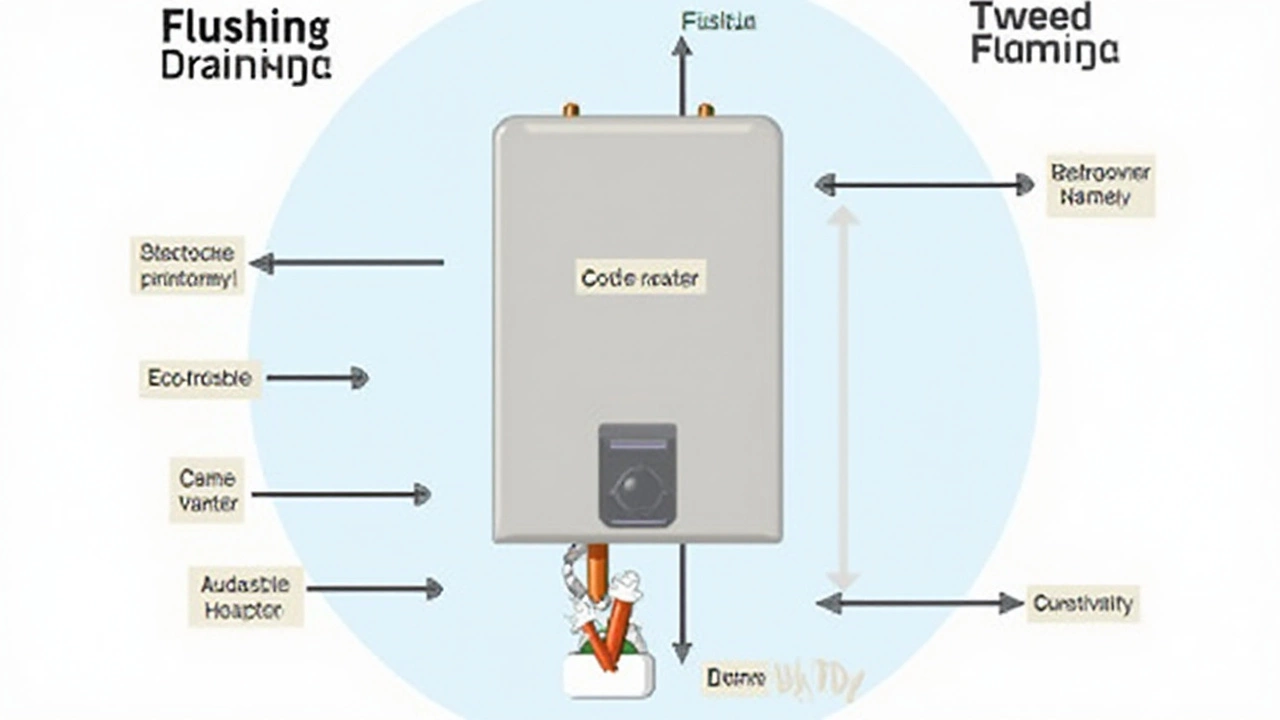
Flushing Your Water Heater
Flushing a water heater is a maintenance step that truly pays off in the long run. This process involves running water through your heater and draining it to remove sediment and mineral build-up that naturally occur over time. These sediments, often composed of calcium carbonate in hard water areas, can settle at the bottom of the tank, akin to small rocks. When left unchecked, this build-up can insulate the water from the heating elements, making your heater work harder than necessary, which can shorten its lifespan and decrease energy efficiency. To avoid this, regular flushing, often recommended once or twice a year, depending on your water hardness, can maintain optimal performance.
The process of flushing your water heater is not as daunting as it may sound. It begins by turning off the power or setting the thermostat to the pilot position for gas heaters, allowing the system to cool down. Next, the cold water supply valve is closed, and a hose is attached to the drain valve, directing water to a suitable drainage area. By opening the drain valve, water, along with unwanted debris, starts flowing out. If you're inclined toward a thorough clean, consider briefly turning on the cold water supply to agitate any remaining sediments and ensure they are fully evacuated. Although this might not conjure a picturesque scene, envisioning the removal of grit and grime from your heater should be motivation enough!
“Regular maintenance, such as flushing your water heater, is critical to extending its life. By maintaining efficiency, you're also conserving energy, which benefits both your wallet and the planet.” — U.S. Department of Energy
Interestingly, the impact of neglecting this simple task isn't just theoretical. Studies have shown that neglect can lead to efficiency dropping by significant percentages over time. Less efficiency translates directly to increased utility bills as your heater struggles to perform what used to be a standard task. Moreover, the sediment build-up can cause unpleasant noises, often described as popping or rumbling, as the water trapped beneath the layers of sediment tries to escape. This auditory signal is your water heater's way of asking for help.
Are sediment build-up problems common in all homes? Not necessarily. The extent to which sediment accumulates depends primarily on the mineral content of your public or well water. Areas with high mineral content, or hard water, are particularly prone to this issue. In these regions, incorporating a flushing routine may not just be recommended but essential. For some, installing a water softener can prove beneficial, potentially reducing the annual frequency of the flush. On the other hand, if your water source is naturally soft, the need might be less frequent, offering a bit of flexibility in your maintenance schedule.
DIY or Professional Help?
Deciding whether to flush your water heater yourself or call in a professional can depend on a variety of factors. For many homeowners comfortable with basic home repairs, this task can be fulfilled with some patience and the right tools. However, if your heater hasn't been previously flushed, or if you encounter rust-colored water, these could be signs of internal corrosion requiring more serious attention. Similarly, if you come across any leaks or suspect increased wear, it's wise to consult a professional to avoid potential water damage or more costly repairs down the line.
Draining Your Water Heater
Draining a water heater is a straightforward process, though often considered a bit arduous by those unaccustomed to performing household maintenance. This task involves the complete removal of water from the tank, which is essential to eliminate sediment buildup. Not only can sediment cause the heater to work harder than necessary—leading to increased energy consumption—but it may also lower the lifespan of the appliance. This makes draining an important part of routine maintenance for homeowners looking to keep their systems in optimal condition.
The process begins with turning off the water heater's power source. For electric heaters, this means flipping the circuit breaker, while gas units require you to switch the gas valve to the pilot position. It's vital to let the water in the tank cool down sufficiently before proceeding to avoid burns or other injuries.
"Safety first," as noted by the Center for Home Maintenance, "isn't just a cliché. It’s a mandate for every DIY project."
Once the heater is powered down and cooled, you should connect a garden hose to the drain valve, typically found near the bottom of the tank. Running the hose to a suitable draining area, such as a floor drain or outside, is crucial to manage the outflow of water. Next, you will open the pressure relief valve and start draining by opening the drain valve. Watching water and sediment flush out can be a surprisingly satisfying task, knowing you're enhancing your heater's efficiency.
After the tank is completely drained, the process can seem to be a test of patience as it might take some time—anywhere from several minutes to an hour depending on your tank size and sediment levels. Take this time to inspect the condition of the water that comes out. Dark or cloudy water indicates significant sediment presence, suggesting a need for more regular maintenance. Once the tank is empty, you might choose to flush it with fresh water to ensure all sediment has been expelled.
Post-draining involves reversing the initial process: you’ll need to close the drain valve, remove the hose, refill the tank, and then turn on the power source once you are sure the tank is full again. Running a tap in the house while refilling can help remove air pockets from the lines, ensuring a smoother operation once the heater is back online. This process not only improves the unit's efficiency but helps maintain hot water quality too.
In terms of costs, homeowners can handle this maintenance task with little to no expense if they already own a garden hose, which highlights this as an economical choice for extending the life of a water heater. Although some might prefer professional assistance, taking on the task yourself can instill a sense of accomplishment, and allow a deeper understanding of your home's plumbing systems. Regularly draining your water heater, ideally every 6 to 12 months, can truly pay off in reduced repair costs and untouched performance.
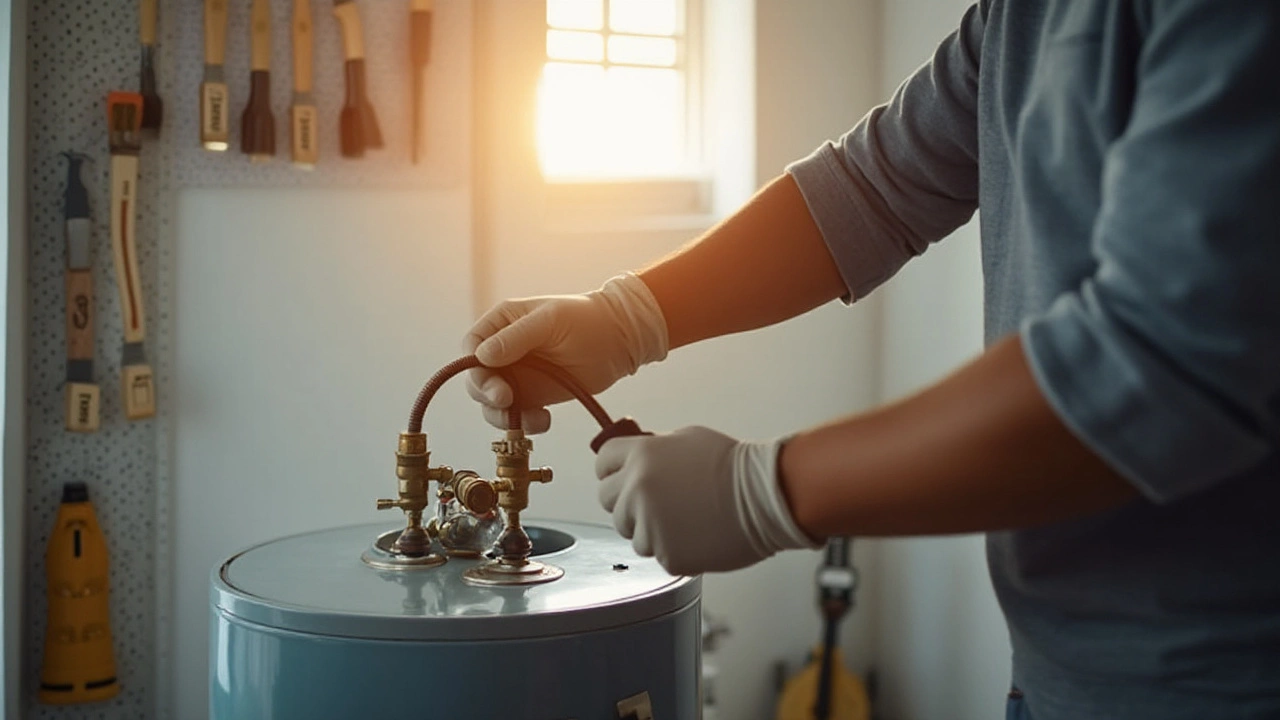
Which Method to Choose?
Deciding whether to flush or drain your water heater largely depends on your specific needs and the current state of your water heater. Both methods serve the purpose of maintenance but they come with different benefits. If you're dealing with moderate sediment build-up, flushing might be your go-to option. It's quicker, less invasive, and suitable for regular upkeep. Flushing involves connecting a hose to the drain valve and removing a portion of water, effectively washing away sediment particles with minimal fuss.
Draining, on the other hand, is a more thorough method. It involves emptying the entire tank, which can help when there's significant sediment accumulation preventing your unit from functioning efficiently. This process is more time-consuming and might require some technical know-how. Homeowners often choose this method during annual maintenance or when there’s a noticeable drop in the heater's performance. It’s less frequent but more comprehensive.
For those pondering long-term solutions, a helpful tip is to incorporate a regular flushing schedule and reserve draining for heavy-duty maintenance. A good rule of thumb is to flush twice a year and drain every year or two. This schedule helps strike a balance between maintaining efficient performance and preventing serious build-ups. Another consideration is your water quality. Areas with hard water are more prone to sediment, so they might benefit more from frequent flushing rather than waiting for annual draining. According to plumbing experts, "Regular maintenance can increase your water heater’s efficiency by up to 25%."
Ultimately, the choice also boils down to convenience. Flushing requires less time and expertise, making it ideal for DIY enthusiasts. Draining might necessitate professional help, especially if you're not comfortable with disconnecting and reconnecting your unit. Keeping these insights in mind, it’s essential to assess your priorities, weigh the pros and cons, and choose the method that aligns best with your maintenance goals.
Long-term Maintenance Tips
Keeping your water heater in good working order isn't just about immediate results; it's about ensuring it serves you faithfully for many years. Regular maintenance is key, and understanding what your heater needs can make your life much easier. To start, set a consistent schedule for servicing. This includes flushing or draining your heater at the intervals recommended by the manufacturer. Depending on your water quality and usage, flushing might be needed annually, while a thorough drain could be a bi-annual requirement. Hard water can accelerate sediment build-up, so adjusting your schedule according to water conditions is smart.
Inspections are another vital component. Every few months, take a peek at your water heater's components. Check the temperature and pressure relief valve to ensure it's functioning properly. The anode rod, often called the "sacrificial" rod, is another critical player. It's designed to attract minerals and impurities, preventing them from corroding the tank interior. If your anode rod looks particularly worn, replacing it can add years to your unit's life. As the U.S. Department of Energy points out, a broken water heater could lead to significant unexpected costs, and regular checks can help avoid these issues.
"An ounce of prevention is worth a pound of cure." - American ProverbMonitoring your water heater's thermostat is also necessary. Many systems are set too high from the start, wasting energy and risking scalding. Adjusting your system to 120 degrees Fahrenheit can save you around 3-5% on energy bills for each 10-degree reduction. Investing in a water heater timer or a smart thermostat can further increase efficiency, allowing you to regulate the heat according to your daily needs, particularly useful for electric water heaters.
If your water heater is in a cool area, like a basement, insulation is your friend. Insulating the unit can drastically reduce energy consumption. Most home improvement stores sell inexpensive insulating blankets. While you're at it, insulate the first few feet of the hot water pipes for further efficiency improvements. This helps retain heat in the water already in the pipes, offering warmer water more swiftly when you turn on the tap.
Finally, to maintain your water heater long-term, consider minor repairs promptly before they escalate. This includes addressing leaks, rust, or unusual noises. Sometimes, these issues are signs that an internal component is malfunctioning. A DIY repair or a quick call to a professional can prevent a minor inconvenience from becoming a disastrous flood or a costly failure. By being proactive in maintaining your water heater, you not only prolong its life but also ensure it's working efficiently throughout its lifespan.

